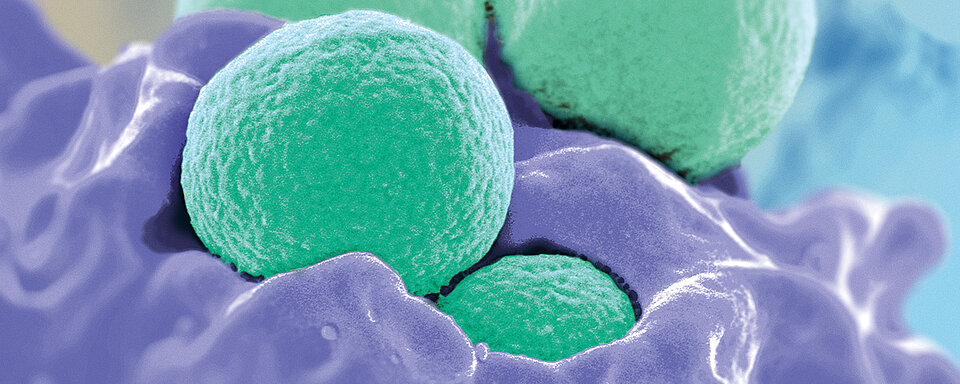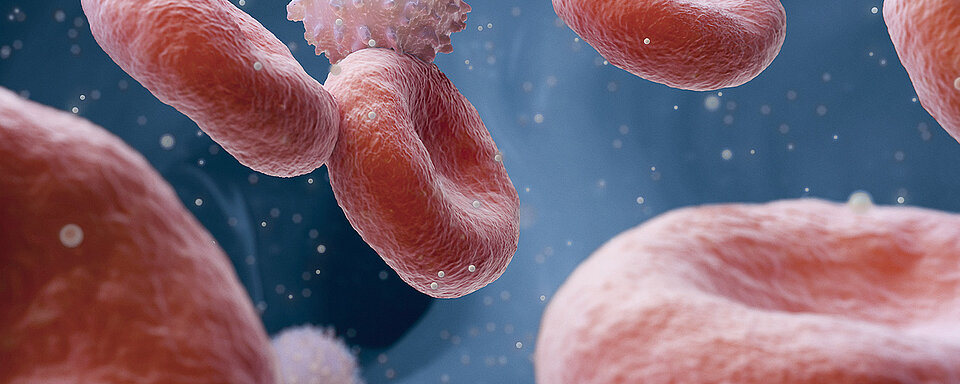Scientific Calendar September 2018
What is a true statement about NEUT-RI and NEUT-GI parameters?
Parameters are measured in WPC channel and are early adaptive immune response markers. They reflect intensity of the fluorescence and side scatter signals at centroid of NEUT population, and are haematological parameters derived from an advanced laboratory test that can be used to characterise reactive samples.
Parameters are measured in WDF channel and are early innate immune response markers. They reflect intensity of the fluorescence and side scatter signals at centroid of NEUT population, and are haematological parameters derived from a routine laboratory test that can be used to characterise reactive samples.
Parameters are measured in WDF channel and are early adaptive immune response markers. They reflect a specific cell count, and are haematological parameters derived from a routine laboratory test that can be used to characterise reactive samples.
Parameters are measured in WPC channel and are early innate immune response markers. They reflect intensity of the fluorescence and side scatter signals at centroid of NEUT population and are haematological parameters derived from an advanced laboratory test that can be used to characterise reactive samples.
Congratulations!
That's the correct answer!
Sorry! That´s not completely correct!
Please try again
Sorry! That's not the correct answer!
Please try again
Notice
Please select at least one answer
Scientific background information
Neutrophils are the most abundant human immune cells. They are recruited rapidly to sites of infection, where their primary role is to kill invading bacteria and certain fungal species through phagocytosis by release of granular enzymes and proteins and by the production of a range of oxygen species. Traditionally regarded as short-lived cells, recent findings on long-term survival, neutrophil extracellular traps (NETs) formation, heterogeneity, suppressive functions and tissue injury have expanded understanding of their diverse role in infection and inflammation (1).
Neutrophil homeostasis in the body is maintained by a fine balance between bone marrow granulopoiesis, storage and release, intravascular margination, clearance and destruction. To release from the bone marrow, neutrophils must migrate across the endothelium that separates the haematopoietic compartment from the circulation. After leaving the bone marrow, the neutrophil becomes part of one of the two compartments found in blood: the circulating pool and the marginated pool. The circulating pool consists of neutrophils flowing freely through vascular spaces and the marginated pool consists of neutrophils adhered to the endothelium of capillaries and post capillary venules, often in the lung, liver and spleen (2). It has been suggested that during infection the marginated pool is minimised, while the freely circulating pool becomes larger (3). The bone marrow also comprises a reserve pool of mature neutrophils, which greatly outnumbers the amount of neutrophils in circulation.
Activation of neutrophils starts by an initial exposure to mediators such as cytokines. These cytokines can be early-phase cytokines like TNF-α, IL-1α and pathogen-associated molecular patterns like endotoxin, as well as late-phase chemoattractants such as IL-8 and GM-CSF. Once activated, transcriptional activity of neutrophils is up-regulated and the oxidative metabolism of the cell is triggered. Neutrophils are very effective at the generation of reactive oxygen species (ROS). These ROS serve as highly effective antimicrobial agents. However, they are also damaging the host thus the ROS-producing neutrophils are rapidly cleared by macrophages. An extension in the antimicrobial activity of the neutrophil is the formation of neutrophil extracellular traps (NETs) (4).
Neutrophil activation measured on XN analyser
For each WBC that passes the laser beam, the forward scattered light (FSC), side scattered light (SSC) and fluorescence intensity (SFL) signals are recorded and graphically displayed in a scattergram. The positioning of the neutrophil population in the WDF scattergram allows an assessment of the neutrophils’ activation. Activated cells have a different membrane lipid composition and show greater activity in the cytoplasm as they actively produce e.g. cytokines. The intensity of the fluorescence signal of activated cells is thus greater than that of resting cells. The parameter NEUT-RI reflects this neutrophil reactivity intensity, expressed in the unit FI (Fluorescence Intensity). The 90-degree SSC of the WBC differential channel provides information about cell density or complexity, which represents the granularity of the cells. Therefore, if the complexity of neutrophils increases upon a change
in functionality, e. g. by toxic granulation or vacuolisation, the position of the neutrophil cluster in the scattergram will also be affected. The parameter NEUT-GI is expressed in the unit SI (Scatter Intensity).
The NEUT-RI and NEUT-GI parameters do not represent a specific cell count, rather the intensity of the FSC and SSC signals, respectively, measured at the centroid position of the NEUT population (5).
XN analyser allows to characterise different stages of a bacterial infection
During the acute bacterial infection, the first parameters that indicate neutrophil activation of an early innate immune response are typically the markers NEUT-GI and NEUT-RI. This is often followed by an increased NEUT count in the peripheral blood due to an increased count of mature neutrophil. The neutrophils are first released from the marginated pool and subsequently, when this pool has been depleted, from a mature neutrophil pool reserve in the bone marrow. When the infection is severe and further defensive cells are needed, first band cells and then immature granulocytes (IG) are released from the bone marrow. This leads to an increased IG count in the peripheral blood.
References
- Kruger P et al. (2015): Neutrophils: Between Host Defence, Immune Modulation, and Tissue Injury. PLoS Pathog. Mar; 11(3).
- Athens JW et al. (1961): Leukokinetic studies. IV. The total blood, circulating and marginal granulocyte pools and the granulocyte turnover rate in normal subjects. J Clin Invest. 40:989-995.
- Summers C et al. (2010): Neutrophil kinetics in health and disease. Trends Immunol. 31:318-324.
- Bekkering S et al. (2013): Another look at the life of a neutrophil. World J Hematol. May 6; 2(2): 44-58.
- SEED Haematology (2018): Looking deeper into inflammatory conditions from a laboratory and clinical perspective https://www.sysmex-europe.com/n/fileadmin/media/f100/SEED/Sysmex_SEED_Haematology_Inflammatory.pdf

